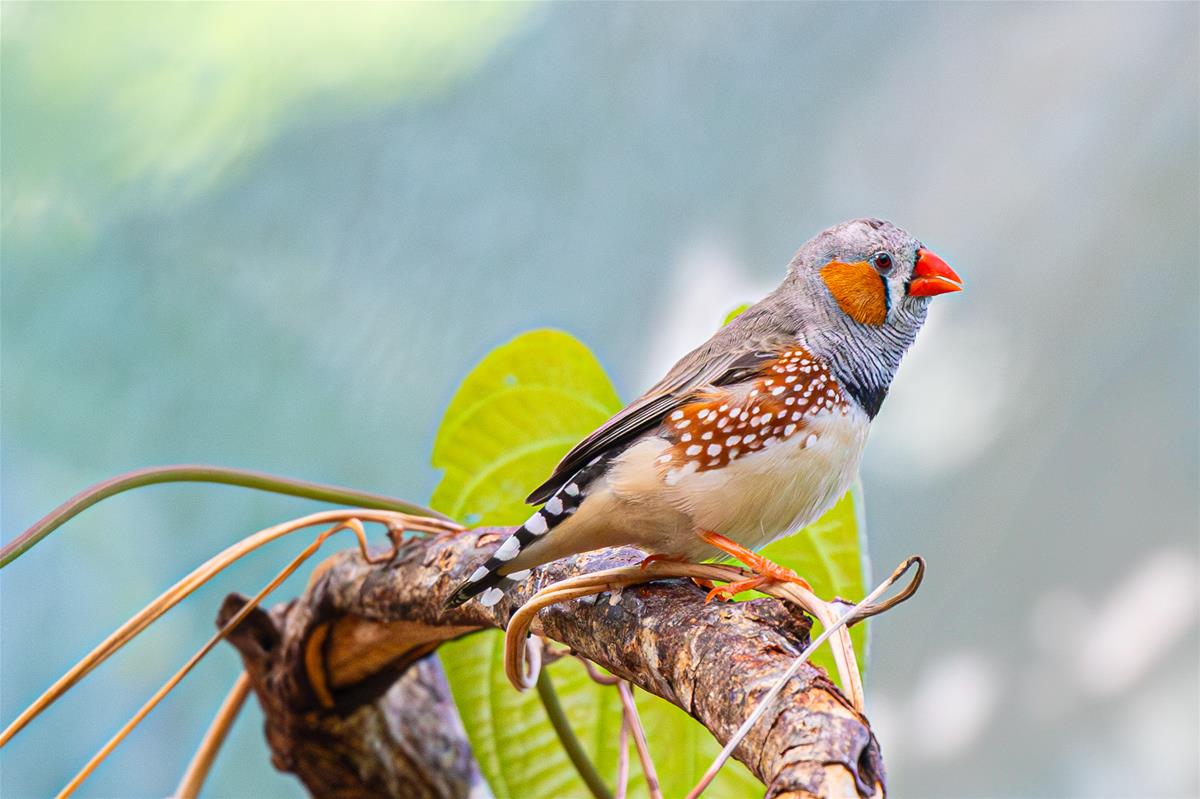Viewable


Location at the Zoo
Americas
Global Range
Australia
Zebra finch
Taeniopygia guttata
The Zebra Finch is a small, social songbird measuring 10 to 12 centimetres in length and weighing 12 to 15 grams. Males are easily recognized by their black-and-white striped throat and chest, bright orange cheek patches, and reddish-orange beak, while females are more subdued in colouring, with grey tones and a lighter beak.
Both sexes have bold black-and-white barred tails and a distinctive call often described as a rhythmic “peep” or “beep.” These birds are highly gregarious, forming flocks and nesting in colonies in the wild. They are among the most studied birds in the world due to their simple care, high reproductive rate, and clear song-learning behaviour.
Conservation Status: IUCN

Distribution
Native to Australia, especially in the interior and drier zones, but absent from the densest rainforests and coastal mountain ranges. Small populations are established on the island of Timor. The species is ubiquitous in captivity across the world.
Habitat
Prefers dry grasslands, open woodlands, and savannahs, often near water sources. They are highly adaptable and can also be found in urban areas, farmlands, and near human settlements. Nests are typically built in shrubs, trees, or structures, and they often nest communally.
Diet
Primarily granivorous, feeding on grass seeds, especially from native grasses like spinifex. They also consume insects, particularly during the breeding season when protein demand is higher. In captivity, they are often fed seed mixes supplemented with greens, fruits, and egg food.
Reproduction
Zebra Finches are prolific breeders, especially in captivity. In the wild, they breed opportunistically after rainfall, which ensures food availability. Females lay 4 to 6 eggs in a dome-shaped nest built from grasses and feathers. Both parents share incubation (about 12–14 days) and feeding duties. Fledglings leave the nest around 18–21 days after hatching and are independent shortly afterward.
Adaptation
- Extreme drought tolerance, enabled by efficient water metabolism
- Fast reproductive cycle ensures population stability during short periods of resource abundance
- Complex vocal learning makes them a model species in neuroscience and behavioural studies
- Social nesting and flocking behaviour provides safety in numbers
- Beak shape allows precise manipulation of small seeds
Threats to Survival
- Minimal in the wild, due to their adaptability
- Potential local declines may occur in areas with prolonged drought or severe habitat degradation
- Predation by invasive mammals and birds around human settlements
Overall, the Zebra Finch remains one of the most resilient and successful small birds in the Australian outback.












